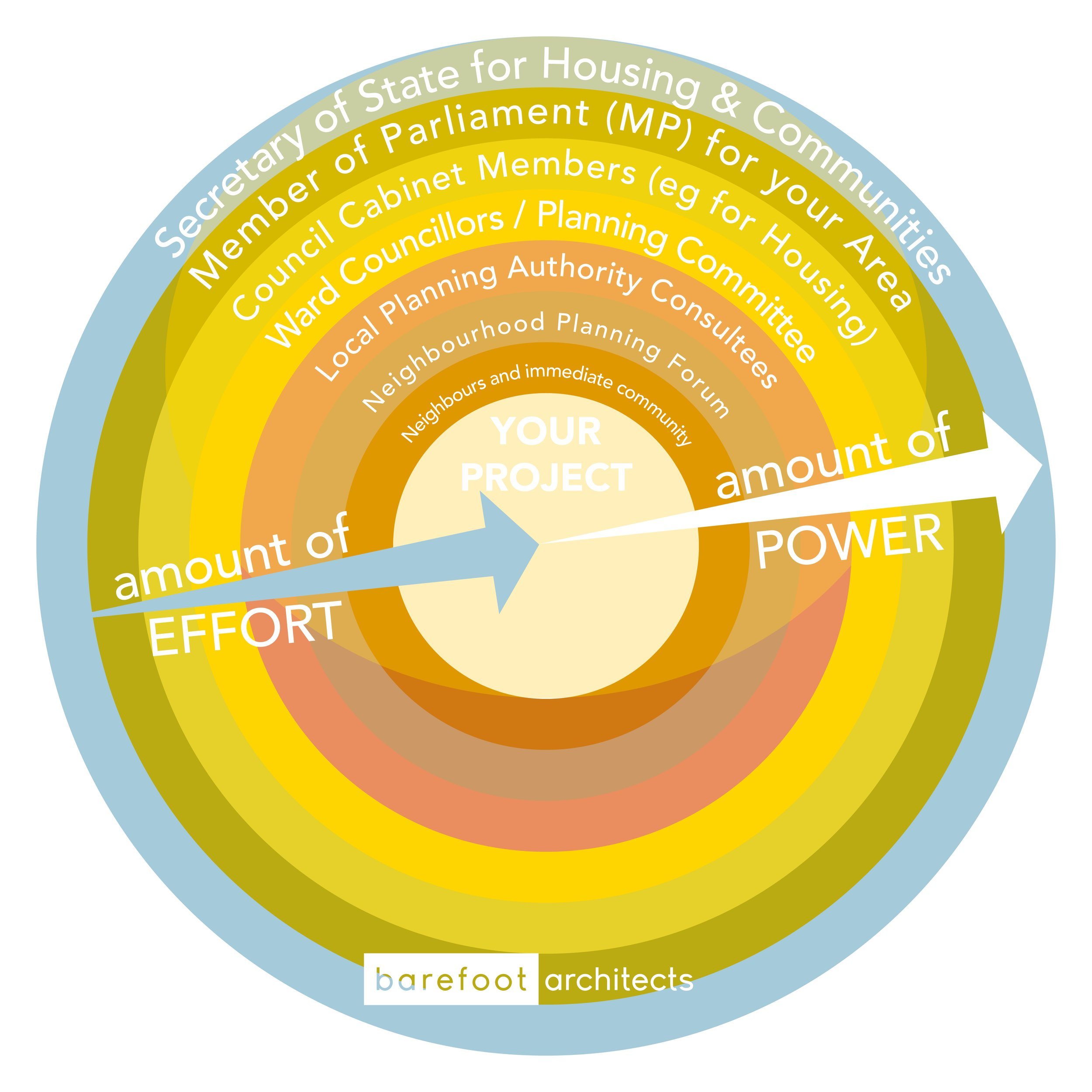How do I get support for my planning application?
Talk to your neighbours, talk to your neighbours, talk to your neighbours! Its one of the best pieces of free advice we could ever give you. So simple, but so crucial to giving you the best chance of success through the planning process. To date, we have an enviable 100% success rate at planning applications across different scales and local authorities for full applications that we have submitted. It hasn't always been straightforward, and we have often had to pivot with applications to achieve consents, but we always get there in the end!
One of the reasons for this is that we encourage our clients to engage with all of the 'stakeholders' for their project from the outset. For simple projects, this might just be your immediate handful of neighbours. But, in many cases, it is the community of residents around you, a parish or town council, a local neighbourhood planning forum (where a neighbourhood plan is pending, or in place), and other political representatives including local ward councillors, or your member of parliament (MP).
I think that most human beings that I have met dislike uncertainty, particularly when it comes to their home or community. Afterall, these are the most valuable assets to most of us. Removing uncertainty with clear communication at all stages of a design project can help to remove these fears, by letting people know three key things: 1. What is being planned (the design), 2. When it is going to happen (the construction), and 3. How long is it going to take (completion date).
We encourage clients to take our initial sketch proposals to their neighbours and stakeholders to let them know what is being considered for their project, and to repeat the process as designs develop. Doing this in person allows you the chance to explain why you are doing something, as well as what you are planning, and to discuss first hand any concerns or queries that people might have. By going away and addressing any fears or concerns demonstrates that you are prepared to listen and take on board feedback. Treating others as you'd like to be treated yourself in this respect is a simple, but helpful, and empathetic approach.
Crucially, if your neighbours are prepared to support (or at least not object) to your proposals, then those people with more political power are likely to find it easier to back your application. It's why we developed this 'wheels of power' diagram. The idea is that you put in most effort to those people closest to you, albeit with least power. That way, those few people who hold most power might be able to lend their influence, as and when it might be necessary.
Recent notices of support for our application in Abbots Leigh Green Belt and Area of Outstanding Natural Beauty
Recently we received planning consent for a contemporary extension in the Greenbelt outside Bristol on a house within the curtilage of a listed building. All credit to our clients, they continuously liaised with their immediate neighbours, the owners of the Listed building, and the parish council. Although initially the case officer did not support the application, it was hard to refuse when each of the three stakeholders above wrote in support of the application, meaning that their ward councillor was also willing to support the application being 'called in' and determined by the planning committee if need be. We were thrilled for our clients, who did everything they could to give their application the best chance possible.
Another salient story to illustrate how important this is, was a client who once decided to knock down the existing building on his site, although it was next door to his longstanding university friends. They had encouraged him to move to, and buy, the building in the first place! In spite of encouraging him to break this news to them prior to submitting his planning application many times over, he didn't let them know at all.
The first they knew of his intentions to (almost) completely demolish the building adjoining their house was upon receipt of notice from the Local Planning Authority. Mortified, they fought the application, objecting vehemently. In spite of this, we secured the consent with relative ease, however the neighbours, once best friends, were lost forever. Upon completion of the project, our client did not move in, and has never lived there. And all because… He didn't talk to his neighbours.
If there's one take away from this blog post, it is talk to your neighbours, talk to your neighbours, talk to your neighbours!



